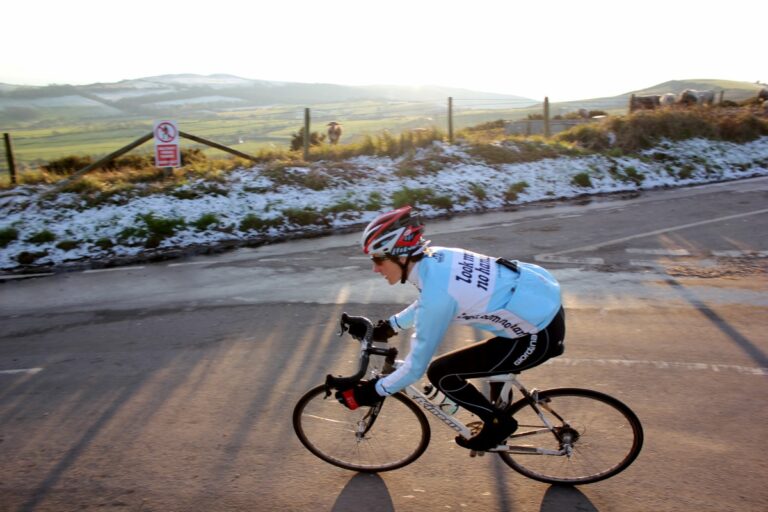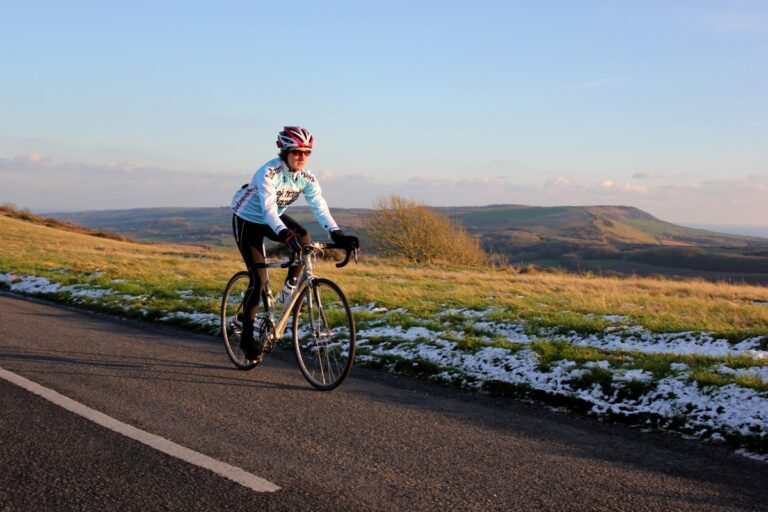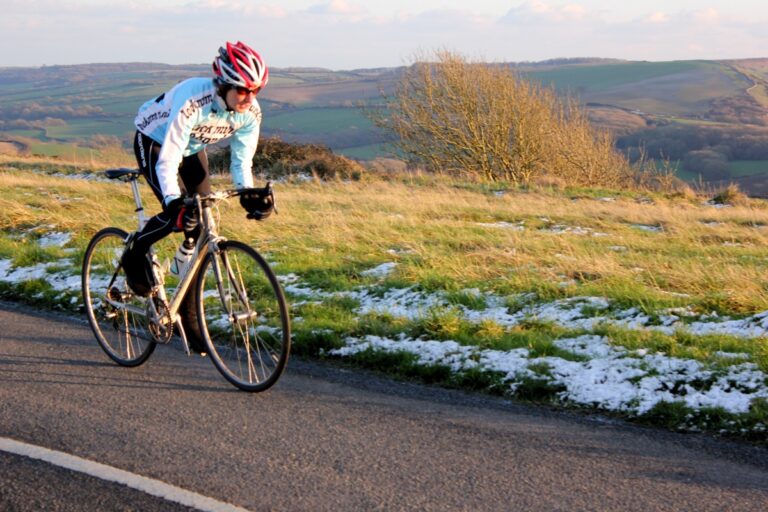If you’ve been following a training plan these last few months, you will very likely have spent a lot of your riding time on your own.
Without the distraction and sometimes competitive temptation of other riders around you, you can get on with the business of developing your aerobic fitness and working to the relevant training zones of your plan, one designed specifically for you.
Well, now there’s room for a change of mind set, and it’s exactly the distraction and stimulation of other riders you’ll need in order to prepare yourself mentally and physically for a real road cycling challenge in the spring.
Make no mistake; if you can get good at riding in a group the performance improvements can be enormous. The internet is awash with claims for the performance gains of drafting, some as high as 50 per cent. Such benefits are based on basic aerodynamics and physics alone, and that is effectively fitness free! Who wouldn’t want a piece of that?
Drafting
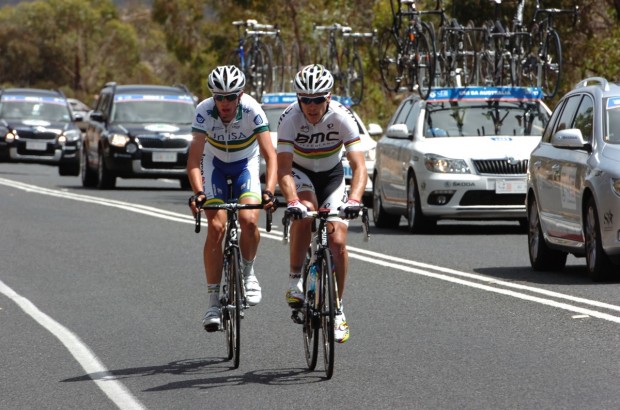
Being able to draft another rider by following their wheel closely is the first stand out difference between a beginner and a competitor in any challenging situation. The scientific principles are pretty basic. Sat in behind, you are sheltered and tucked in a vortex where not only are you no longer pushing against the wind, but you are literally being ‘carried’ along by the eddying flow of the air pocket created behind. This can save you between 20 and 40 per cent of your energy expenditure, depending on how close you are and how strong the wind is. I don’t think there is a single piece of technical gadgetry that can give you that kind of benefit for any given fitness, so it’s time to get practicing.
Practice, practice, practice
It’s easy to skip over the concept of drafting because we all understand it, but doing it well is another matter, and something that takes patience and practice. As a starting point, you will get some decent gains sitting half-a-wheel’s width from the back of another rider, and this will allow some comfortable adjustments for change of direction and speed.
It’s most important when following a wheel to relax and avoid any sudden change of direction or sudden braking. This goes for the rider on the front of a line too as it is no better to have someone crash into the back of you than someone suddenly stop in front. Once a ‘string’ or ‘pace line’ is operating, you are part of a chain of people and the golden rule is to consider everyone in the line. You are in it together, helping each other smooth out the ride and keeping everyone safe.
Peripheral visionDon’t stare down at the wheel in front but judge your distance by the back of the rider ahead, using your peripheral vision to look out for any changes that might be approaching. Occasionally you may check your wheel distance but you are aiming to develop a second sense of how close you are so you can make minor adjustments without looking down.
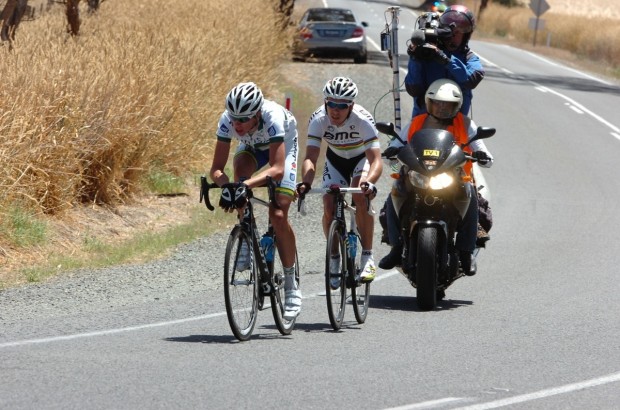
Over time and as you develop confidence you can work your way closer to the wheel in front if you feel comfortable and are with other experienced riders, but it’s better to be consistent and smooth first, before looking to get really close when drafting. If you force yourself to sit closer than you can manage you will start to ride erratically, making life difficult for everyone else around you, and making for an anxious experience which defeats the whole object of ‘sitting in’.
Cross winds
Once you have mastered linear following, there is a huge pay off in becoming more sensitive to wind direction, even in what might seem like light conditions. Normally, when a ride lines out it is because of the group’s reluctance to take the full brunt of the wind, but rarely is the wind directly head on and it is good practice to try and notice wind direction in general, even when riding by yourself. If you tune into it, you should get a feel for the wind blowing more on one side of your body, but if you find this difficult at first, look for obvious signs like the wind in the trees, and even flags and which direction they are pointing.
Overlapping wheels
If you find yourself riding with a training partner in a cross wind, experiment with the difference it makes to be on the more sheltered side of them, slightly overlapping your front wheel with their rear. I did my own experiment on this recently on a windy and exposed stretch of road and found the difference to be worth 10 beats on my heart rate monitor, a difference that will preserve your precious muscle glycogen a lot more than any carbohydrate drink.
Bigger groups or pairs
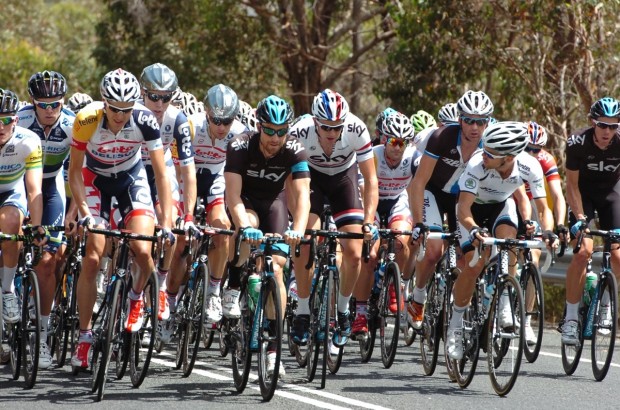
While it is helpful to overlap wheels in a cross wind in a small group or single string, it is not good practice to overlap in a bigger group. On British open roads typically (and for legal reasons) riders will sort themselves into pairs and it is not good form to overlap the rider in front in this instance as it disrupts the line formation. Having said that, you can still be aware of the wind and position yourself on the sheltered side of the line if you want to make the most of drafting.
If you find yourself in a bigger group in a European sportive or race situation, the whole bunch becomes much more dynamic and it helps to learn how to move around a group smoothly by looking for openings and moving into them, actively positioning yourself where you want to be rather than finding yourself at the back without knowing how you got there.
Diminishing gains at the back
It might seem logical with all these wheels to follow that you will get the most out of the group dynamic by sitting at the back. In practice though, this is rarely the case, as near the back you are in danger of playing an exhausting game of yo-yo. Any changes of pace that occur at the front will be magnified at the back of a group, forcing you to accelerate harder out of bends or after junctions to catch back up, leading to an increased risk of the elastic snapping and you getting dropped all together. A wiser rider will sit towards the front of a group without taking too much wind for a smoother and more sheltered ride to maximise efficiency all round.
Taking ability into account
This technical talk is all very well but it is important to acknowledge your own ability in the grand scheme of what you are trying to do and allow yourself to progress gradually rather than force the issue. Having seen the Grand Tours sweep across your TV screen, it’s easy to get carried away in the excitement and try to replicate the style and skill of the pros.
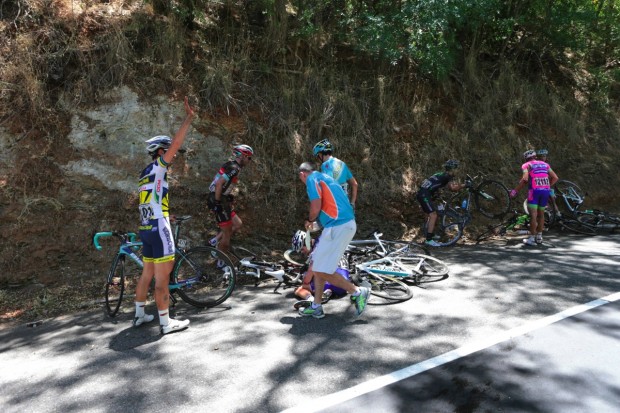
In the real world we are not in a Tour de France peloton, but in the more difficult position of riding with a group of similar fitness but often varied skill. The first thing to do in this situation is take responsibility for your own actions and ride within your ability. Safety must come first as there is nothing that will halt your progress as a rider quicker than a sudden meeting with the ground.
Etiquette and vigilance
There are all kinds of signals and etiquette associated with riding in groups at different levels, but the main principle is to communicate calmly and clearly without over-reacting. Shouting “HOLE!” at the top of your voice and swerving sharply to avoid it will probably not help you to make friends in a large group, but staying vigilant and communicating potential hazards as best you can will.
Overall staying relaxed but alert is the art of riding well in a group. This is a fine balance that requires a special sort of psychological focus to get right. As much as anything else this is mind training, and any sports psychologist will tell you that focussed practice and visualisation are critical tools in your performance armoury. Though you may only have a handful of big events in your calendar, there will be plenty of chances to rehearse these group riding if your mind as well as your body are on the job.

